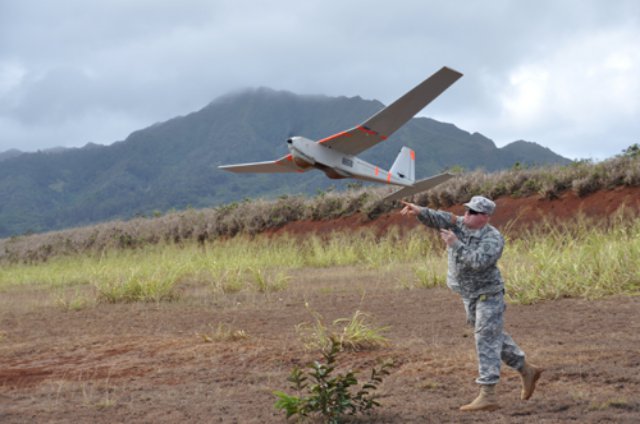 The US Army’s development and integration of unmanned aircraft into its units has taken place mostly at entrenched bases in Afghanistan and Iraq, but new strategic guidance calls for lighter, more agile forces.
The US Army’s development and integration of unmanned aircraft into its units has taken place mostly at entrenched bases in Afghanistan and Iraq, but new strategic guidance calls for lighter, more agile forces.
The next step in the service’s unmanned systems programme will be adapting the aircraft to more expeditionary missions, Colonel Timothy Baxter, UAS Project Manager, said Feb. 4.
“We have kind of been [forward operating base]-centric in Iraq and Afghanistan the past 10 years or so,” he told reporters in a conference call.
Instilling an expeditionary mindset, or what he called “next war preparations,” within the UAS community is going to be a new focus. This thinking will influence the five-year plans for product improvement, he added.
For example, the Army has taken the lead for developing ground-based, sense-and-avoid radar systems to prevent unpiloted aircraft from colliding with other aircraft in U.S. national airspace. The primary focus of this programme has been to allow military unmanned aircraft to safely share the same skies as commercial or private aircraft when doing training within the United States. The Army will have to think about how to bring the radars along with it when it is on the move, he said.
The Army may have to employ unmanned aircraft systems against near-peer or hybrid threats, rather than the insurgents it has faced over the past decade, he said. The service, along with the Air Force, has had the luxury of flying over battlefields where aircraft are not challenged by anti-aircraft guns. The knock on UAS is that they may not always have it so easy. The air-sea battle concept foresees tougher opponents, who have anti-access/area-denial capabilities. The next war may be against an enemy with more advanced air defence systems.
“Within the programme office, we have been aggressively pushing our unmanned systems stakeholders to do a critical review of UAS base philosophies within the Army,” Baxter said.
Meanwhile, in the near-term, the Army will not have any problem continuing with the acquisition of its newest UAS, the Gray Eagle, despite budget uncertainties, Baxter said. The Army has been pushing the Gray Eagle into the field prior to full-rate production in order to put the technology in the hands of soldiers as soon as possible.
Frank Kendall, Undersecretary of Defense for Acquisition, Technology and logistics, is scheduled to hand down in May a decision to proceed with full-rate production, with a target for a contract award in June, Baxter said.
“There is no effect right now on what we are currently fielding,” Baxter said.
Source: National Defense
